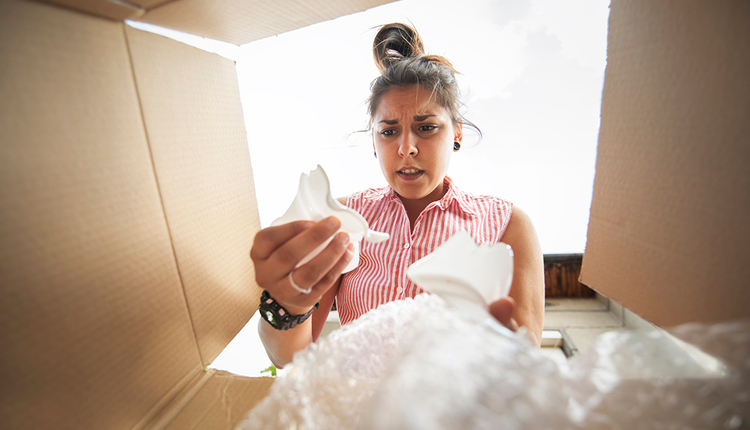In Asia, ocean containers are commonly loaded with single boxes. This certainly minimizes the cost per box for shipping charges, but this practice can lead to costly consequences for the receiver of these shipments.
In India and Asia, workers are often paid less than $1/hour (and perhaps half this) to load individual boxes into containers. The goal is to jam as many boxes as possible into the ocean container, floor to ceiling and wall-to-wall. With an army of low-paid workers to perform this task, loading can go quickly.
In contrast, the situation is very different at the receiving end. First of all, the loaded costs for warehouse workers in the US will be $20-$40/hour, depending on whether they are getting benefits or not. Unloading one box at a time is slow. If the load is mixed, then workers must separate the products onto pallets, keeping like units together. I have personally witnessed up to four workers needing six to eight hours to fully unload ocean containers.
Though the hourly wages are certainly one cost, there’s an additional cost that often gets lost: demurrage charges. These charges occur when an ocean container lands on shore but doesn’t get emptied within a certain amount of time. The slowness of unloading boxes one at a time and then sorting them causes massive delays. International warehouses that receive loads only from overseas can have weeks of ocean containers parked in various lots all over Los Angeles, paying both demurrage and storage charges. Part of the problem is how companies are “siloed" by departments, with no true cost czar considering all of the costs of the supply chain, while well-meaning employees attempt to attain the minimum cost possible for their area of focus. As a result, the shipping manager may be very proud of the lowest shipping cost per box, but that didn’t consider the true landed cost of that product.
Balancing Costs
Attaining the overall lowest cost sometimes leads to higher costs for some aspects of the business. In this case, one possibility would be for the shipper to unitize boxes together, preferably on a slip sheet and with stretch wrap. The boxes should be sized to fit a footprint slightly smaller than a standard US 48 x 40 pallet. Why? Because US pallets leave empty space in ocean containers, getting 20-21 footprints per 40-foot container, but wasting space between footprints. Companies focused on landed costs will use the internal dimensions of ocean containers to help dictate the size of boxes and unitized loads. If the load is slightly smaller than US pallets, then it’s possible to get 22-26 footprints per container, wasting very little space, and making it easy for the US workers to simply place the load onto a standard pallet once extracted from the ocean container. Using plastic slip sheets is far better than using a pallet from Asia since it takes virtually no vertical space, is a fraction of the cost of a pallet, is made from 100% recycled content and can be recycled again, or even sold back to the slip sheet manufacturer. Unloading an ocean container of boxes that are on slip sheets takes about 30 minutes by one forklift driver. In fact, if slip sheets are used, then the sender of the ocean container also saves on labor, requiring only a single worker to fully load the container. Remember, just because labor is cheap in some places doesn’t mean you shouldn’t be as efficient as possible.
If push-pull equipment isn’t available, then standard clamp trucks could also work, though your packaging will need to be designed and tested for side-to-side compression. Overall, only a small percentage of boxes might be left out of an ocean container that has unitized loads vs individual boxes, but the overall savings, let alone speed of business, will benefit from such foresight.
It should be noted that slip sheets work well, but only when the two ends of the supply chain are positioned to accommodate this method of material handling.
Kevin Howard is a consultant with and owner of Packnomics LLC. His focus is on distribution packaging design and testing. He can be reached at kevin.howard@packnomics.com. Visit www.packnomics.com for more information.
This article originally appeared in the March/April, 2022 issue of PARCEL.
















